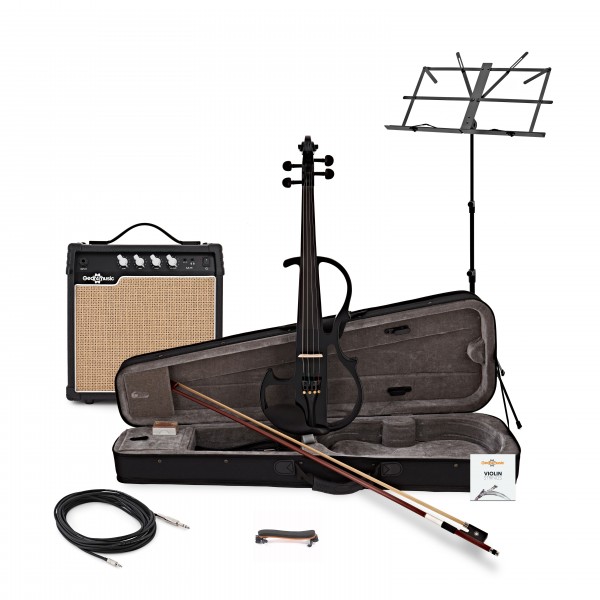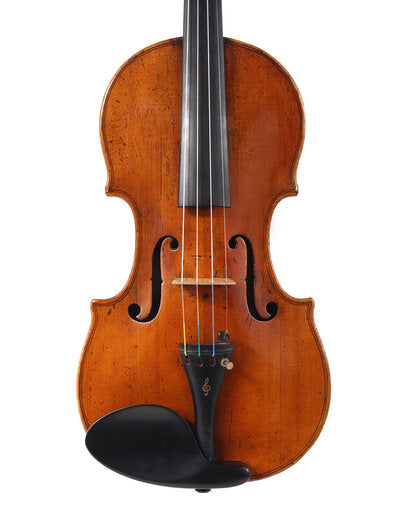Transitioning from Acoustic to Electric Violin: What Players Need to Know
Share
For many string players, the acoustic violin is where it all begins—its warmth, resonance, and centuries of tradition make it a beloved instrument across the world. But in today’s music scene, more and more violinists are exploring the world of electric violins, where amplification, effects, and genre-crossing creativity open up brand new possibilities.
If you’re considering making the switch—or even just adding an electric violin to your setup—this guide will walk you through everything you need to know about transitioning from acoustic to electric. From instrument feel to amplification, and from practice benefits to live performance setups, we’ll help you navigate the journey with confidence.
For players ready to explore, Metzler Violin Shop offers a full range of electric instruments, including electric violins, electric violas, electric cellos, and electric upright basses.
1. The Feel of the Instrument

One of the biggest questions players ask is: Will an electric violin feel different from my acoustic?
Similarities
-
Fingerboard & Strings: Most electric violins are built with the same scale length and fingerboard dimensions as acoustics, so your left-hand technique will transfer smoothly.
-
Bow Technique: Bowing fundamentals remain the same, though amplified sound can make subtleties more noticeable.
Differences
-
Weight & Balance: Electric violins often weigh slightly more due to electronics and solid bodies.
-
Resonance: Unlike an acoustic, the body of an electric violin doesn’t vibrate to project sound. Instead, pickups and amps handle this, which can feel different under the ear.
-
Shape: Some electric violins feature modern, skeletal designs. While eye-catching, they can feel different under the chin or shoulder.
Tip: If you want the closest possible transition, look for an electric violin with a more traditional outline from Metzler’s electric violins collection.
2. Learning to Play with Amplification

The biggest shift when moving to electric is amplification. Instead of your instrument projecting naturally, your tone now comes through an amp or PA system.
What to Expect
-
Immediate Feedback: Mistakes are magnified—clean technique is key.
-
Tone Shaping: EQ controls on amps let you adjust brightness, warmth, and presence.
-
Volume Control: You’ll need to learn how to balance your output to fit with a band or backing track.
Essential Gear for Beginners
-
Amp: A small acoustic or clean amp is ideal for practice.
-
Cables: High-quality, shielded cables prevent noise.
-
Headphones: Many electric violins and amps allow silent practice—perfect for apartments or late nights.
Metzler’s electric instruments collection includes instruments and accessories designed for seamless amplification.
3. Embracing Effects
One of the most exciting aspects of going electric is the ability to use effects pedals. These expand your tonal palette far beyond what’s possible with an acoustic violin.
Common Beginner-Friendly Effects
-
Reverb: Adds spaciousness and depth, mimicking a concert hall.
-
Delay: Creates echoes and rhythmic patterns.
-
Chorus: Thickens your sound, making it lush and expansive.
-
Looper: Lets you record and layer parts—great for solo practice or performance.
Want to experiment with rock, jazz, or electronic music? Effects make it possible. Explore pedals gradually and build a setup that reflects your musical style.
4. Silent Practice and Recording Benefits
One of the hidden advantages of electric violins is how well they adapt to practice and recording.
-
Silent Practice: Many electric violins allow headphone connections, so you can practice without disturbing others.
-
Recording Ready: Direct outputs (DI) make it easy to plug into an audio interface and record straight into your computer.
-
Consistency: Electric instruments provide a stable sound regardless of room acoustics or weather conditions, unlike acoustic violins that react to humidity.
For students, professionals, or hobbyists, this flexibility can be a game changer.
5. Genre Exploration
Transitioning to electric doesn’t mean leaving classical behind—but it does open doors to new genres.
-
Classical Crossover: Use electric violin with effects to reinterpret traditional works.
-
Rock & Pop: Distortion and drive pedals let you shred solos alongside guitars.
-
Jazz & Fusion: Electric violins excel at improvisation with effects like wah and modulation.
-
Film & Ambient Music: With reverb and looping, you can create cinematic soundscapes.
Metzler also offers electric violas, electric cellos, and upright basses for players interested in exploring other string voices within these genres.
6. Adjusting Mindset & Technique
Finally, transitioning isn’t just about gear—it’s also about mindset.
-
Play with Confidence: Amplification means your sound carries farther. Lean into it.
-
Experiment: Don’t be afraid to try pedals, new genres, or unconventional bowing styles.
-
Stay Flexible: You may need to adjust bow speed, pressure, and vibrato to get the most out of electric tone.
7. Choosing the Right Instrument
When selecting your first electric violin, keep these points in mind:
-
Purpose: Is it mainly for practice, live shows, or recording?
-
Design: Do you prefer a traditional look or a modern, skeletal frame?
-
Budget: Entry-level models are accessible, while professional instruments offer more tonal control.
-
Expandability: Consider whether you’ll want to add effects and need features like multiple outputs.
Start your search with Metzler’s handpicked electric violins or explore the broader electric instruments collection to find the perfect fit.
Final Thoughts
Making the leap from acoustic to electric violin is an exciting step that can transform your playing. While the feel of the instrument is familiar, amplification, effects, and silent practice open up opportunities that simply aren’t possible with an acoustic alone.
Whether you’re drawn to the creative freedom of effects, the convenience of headphone practice, or the thrill of performing amplified on stage, an electric violin can be an inspiring addition to your musical journey.
Explore Metzler’s full range of electric instruments—including electric violins, electric violas, electric cellos, and electric upright basses—and find the right companion for your transition into the electric world.

